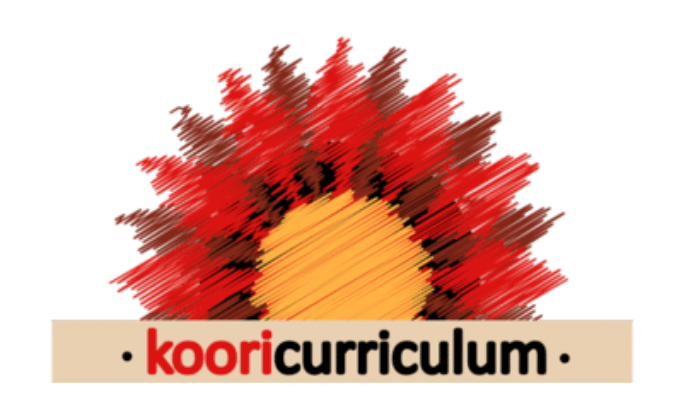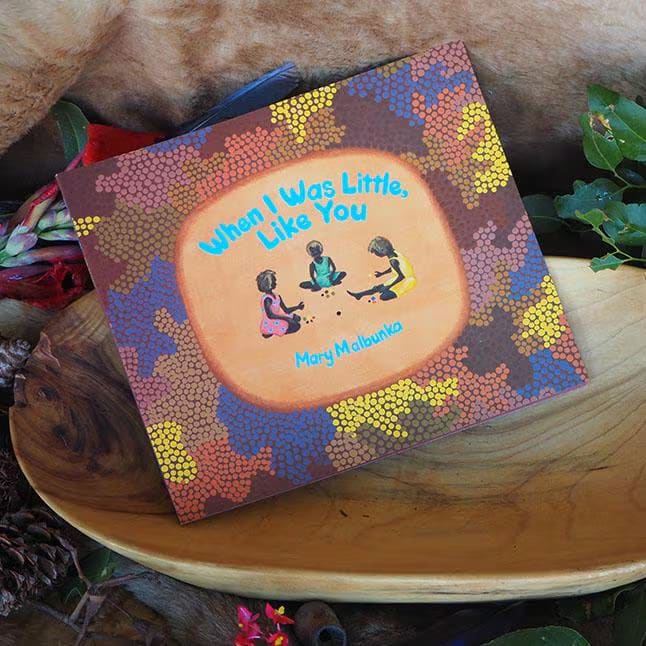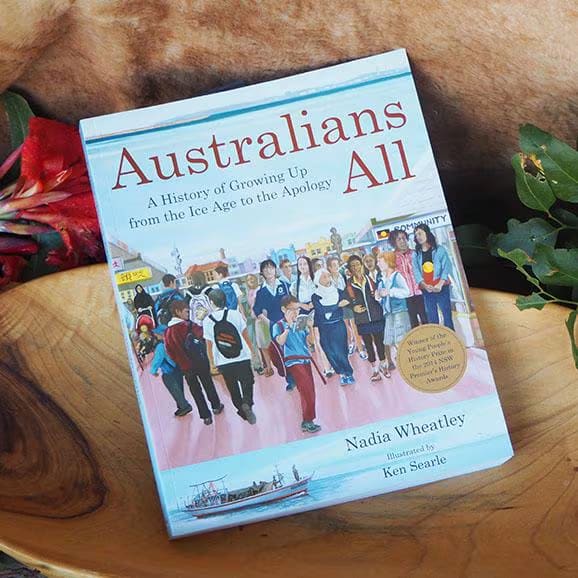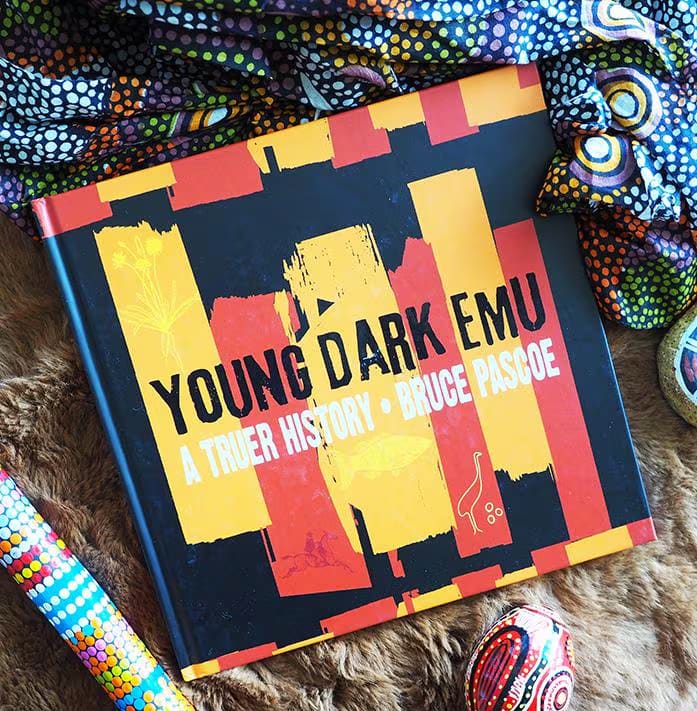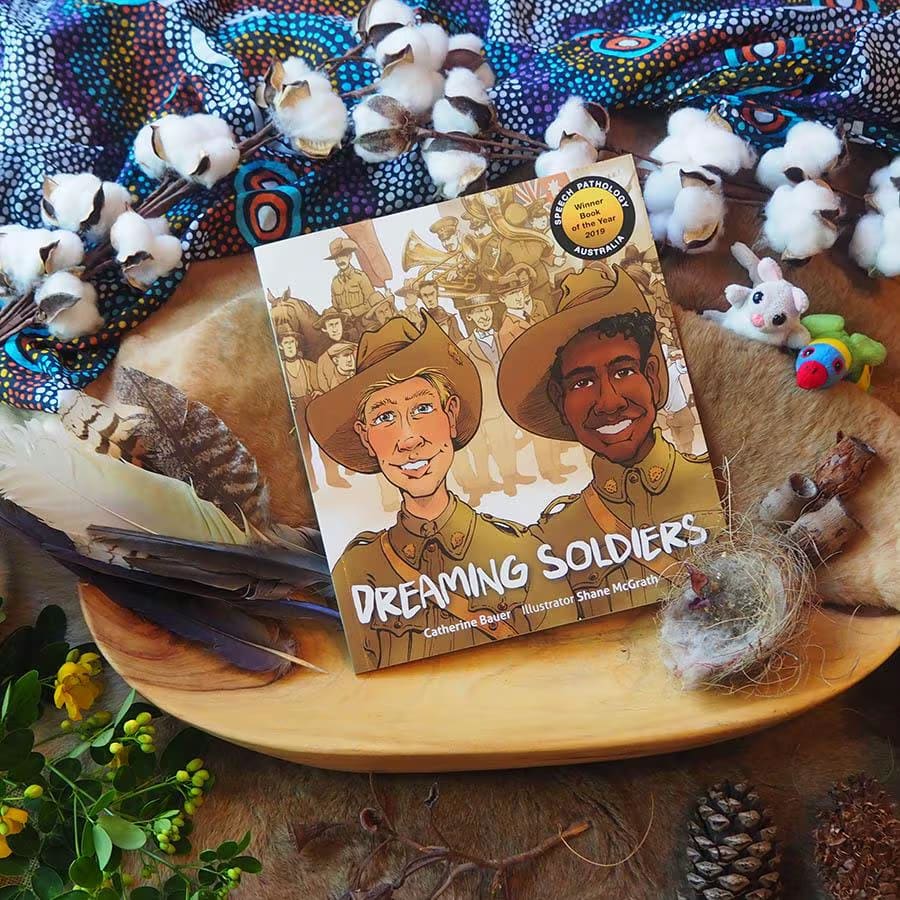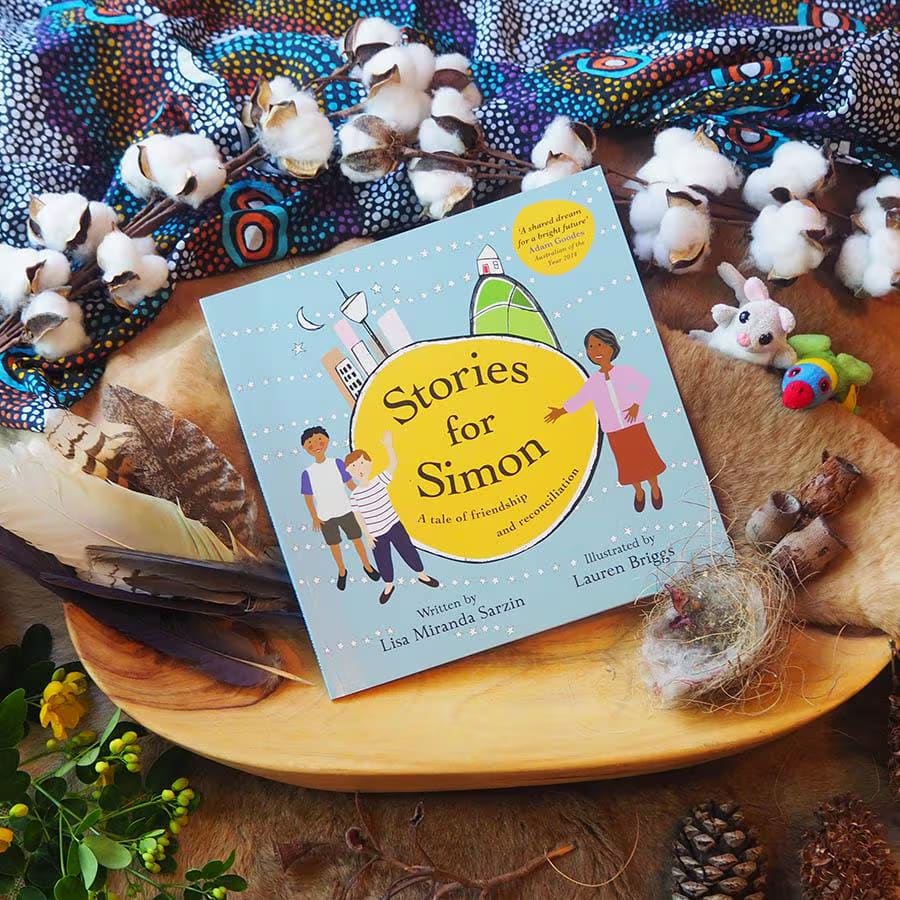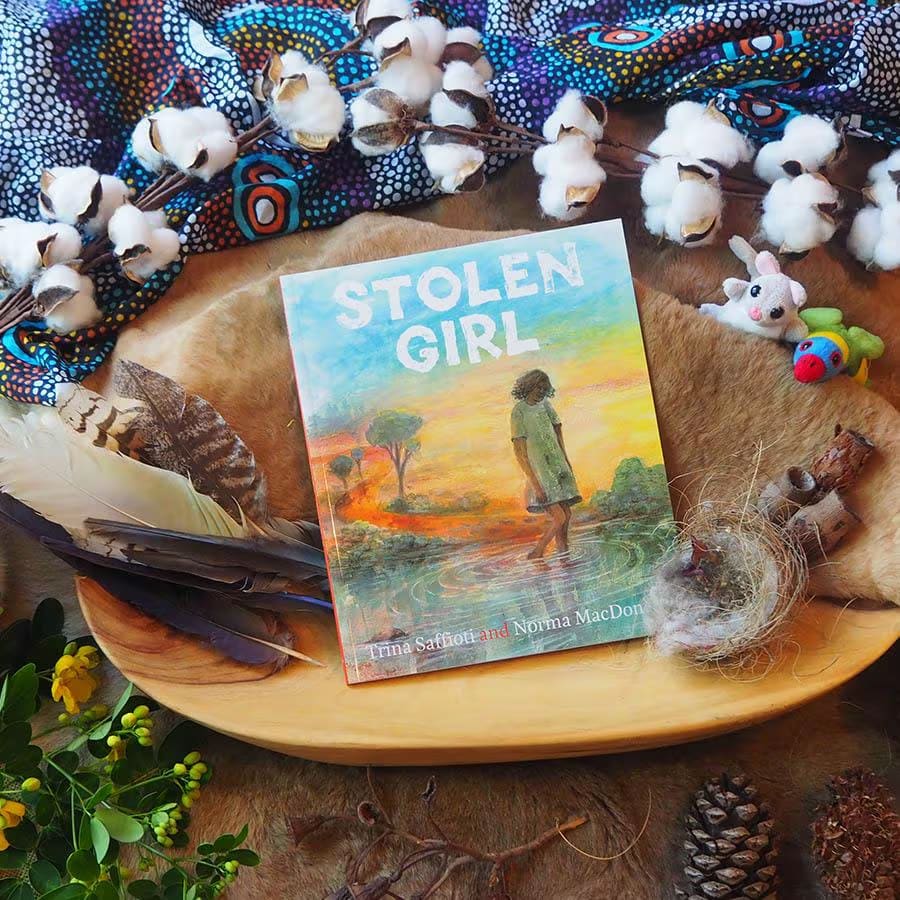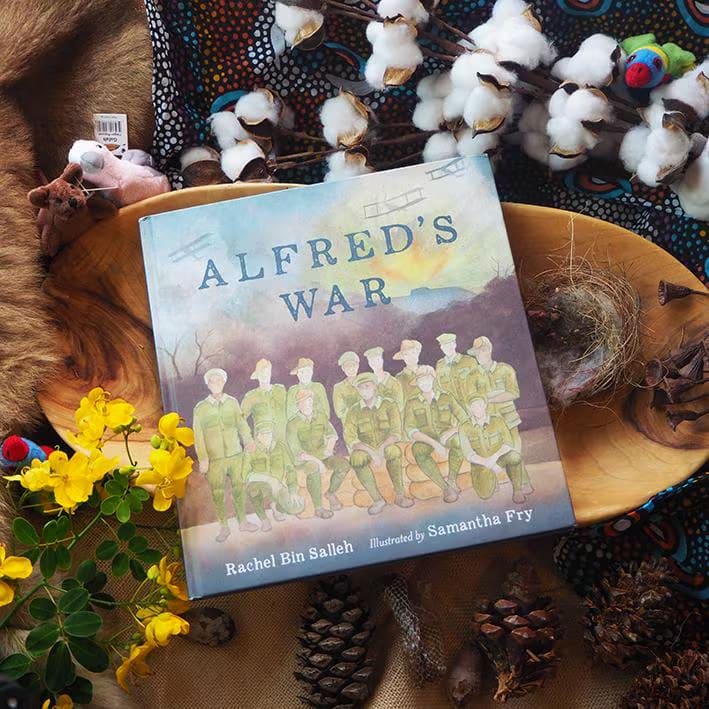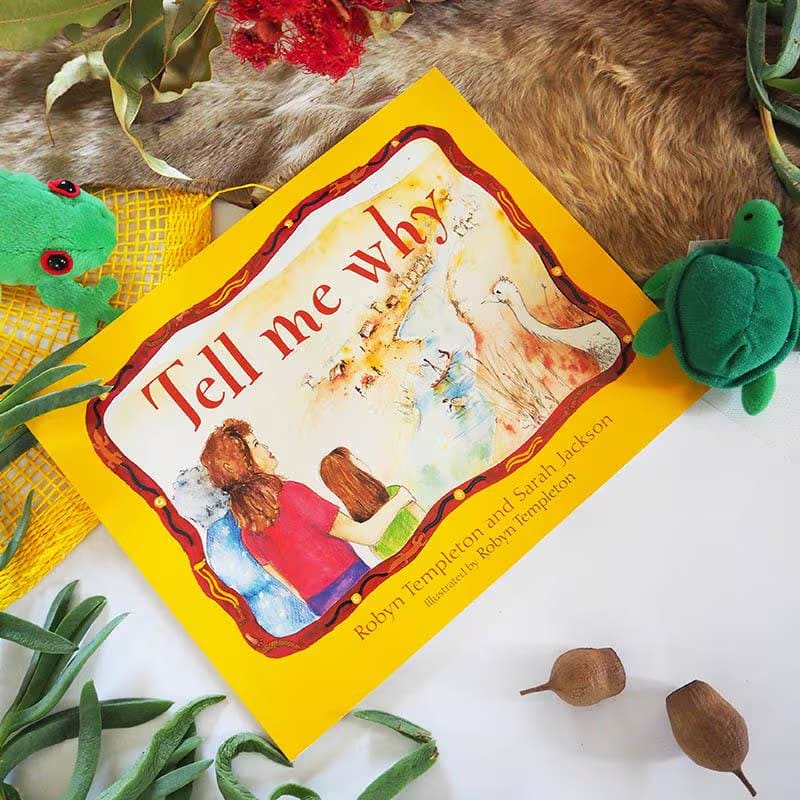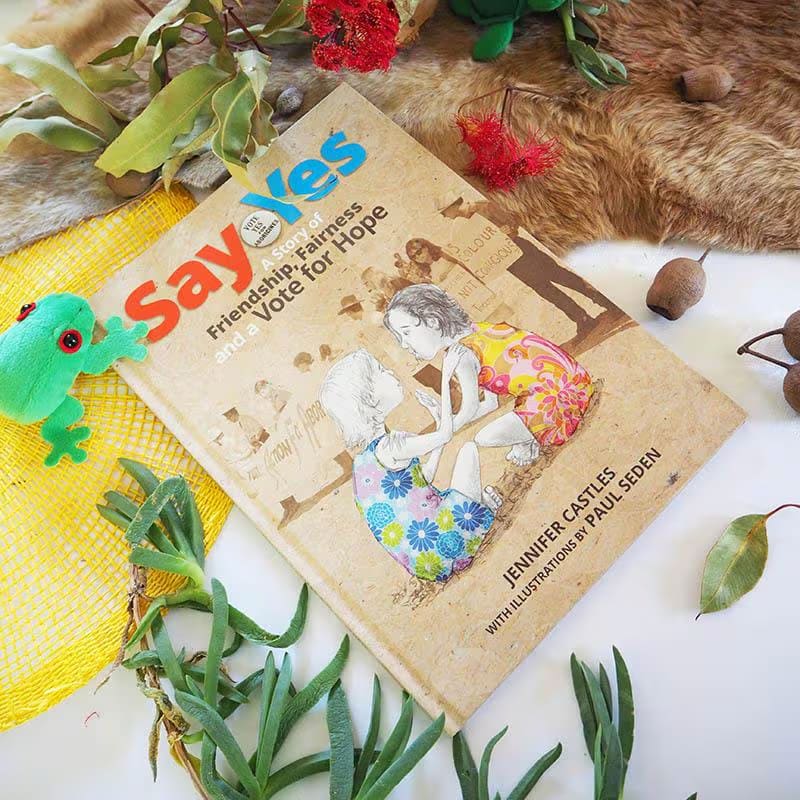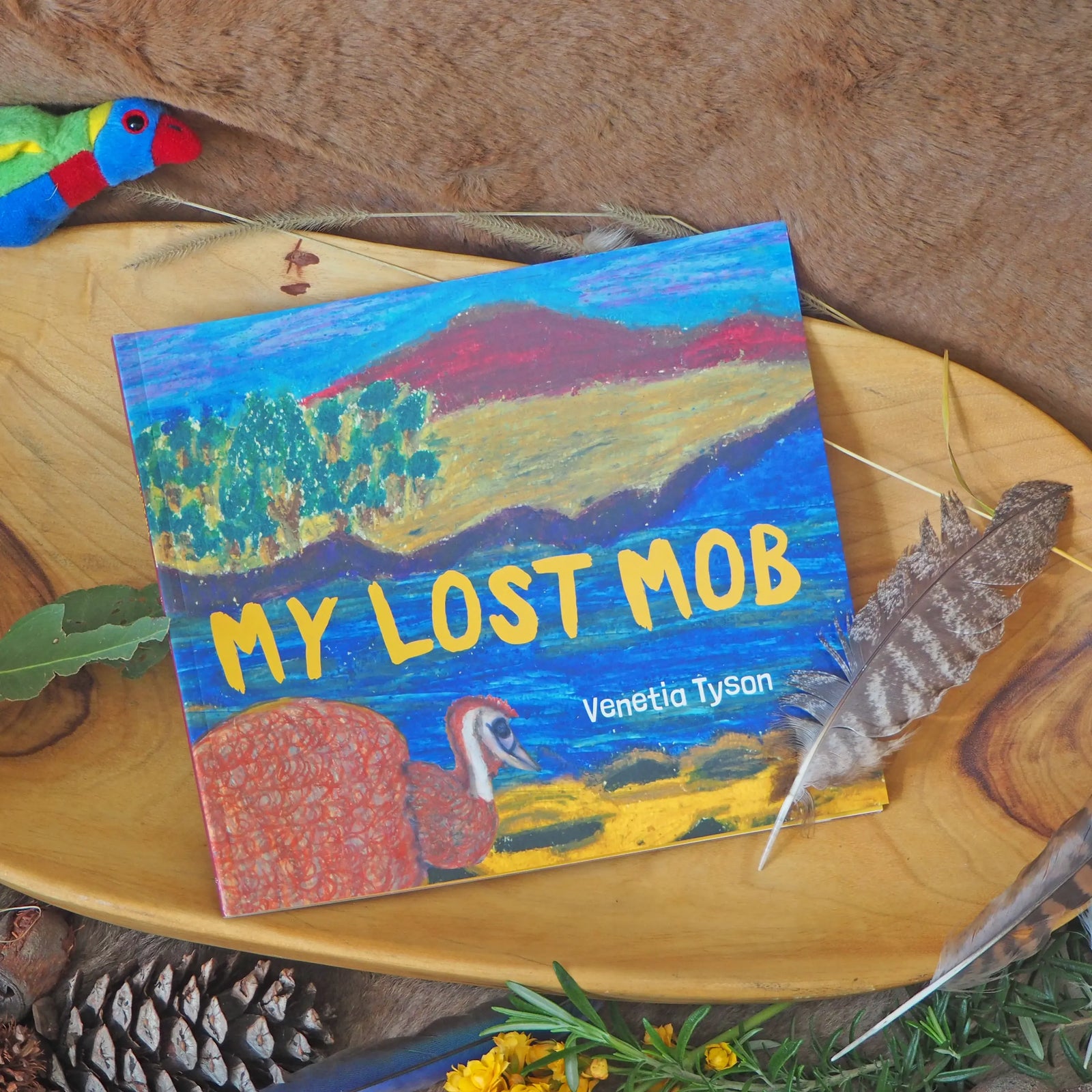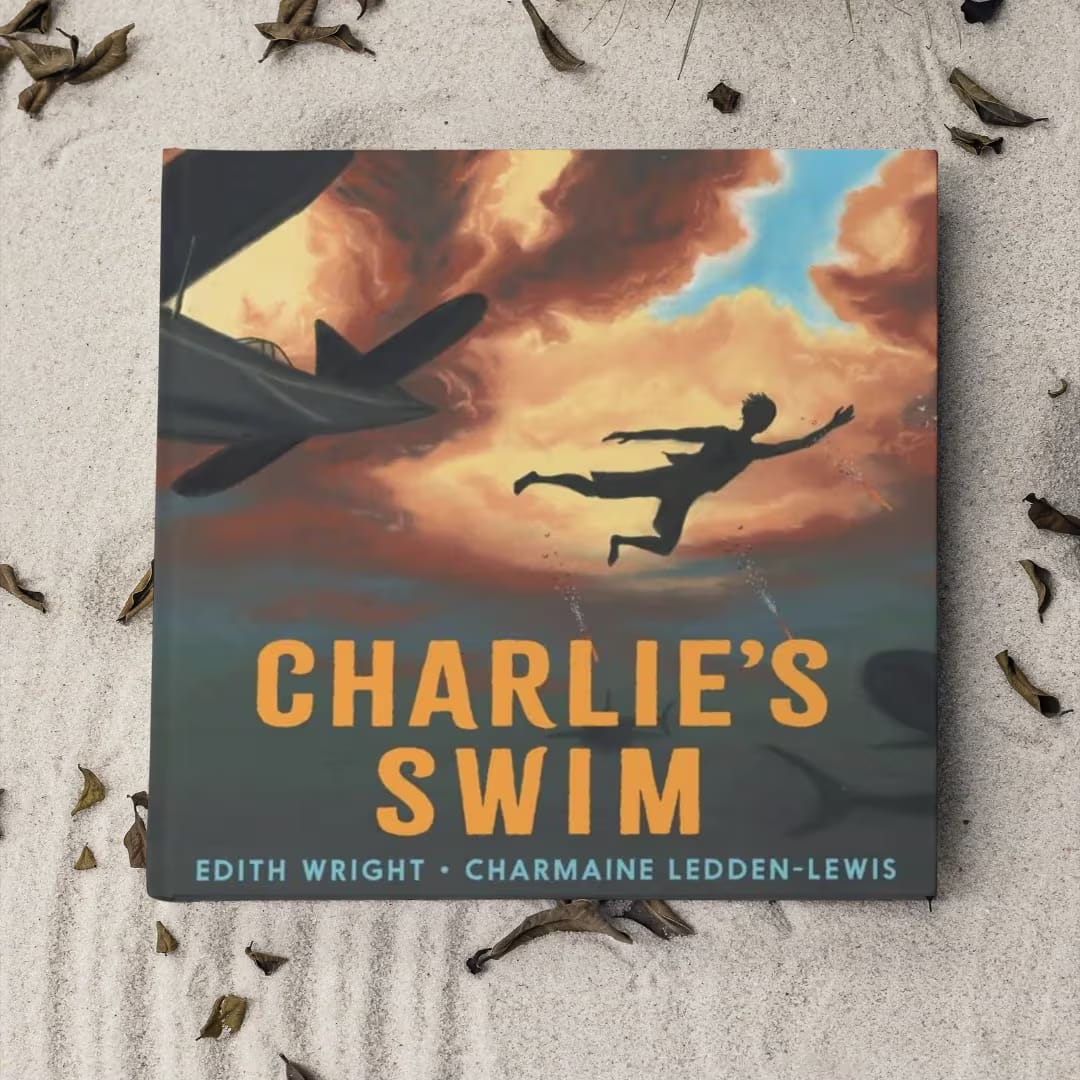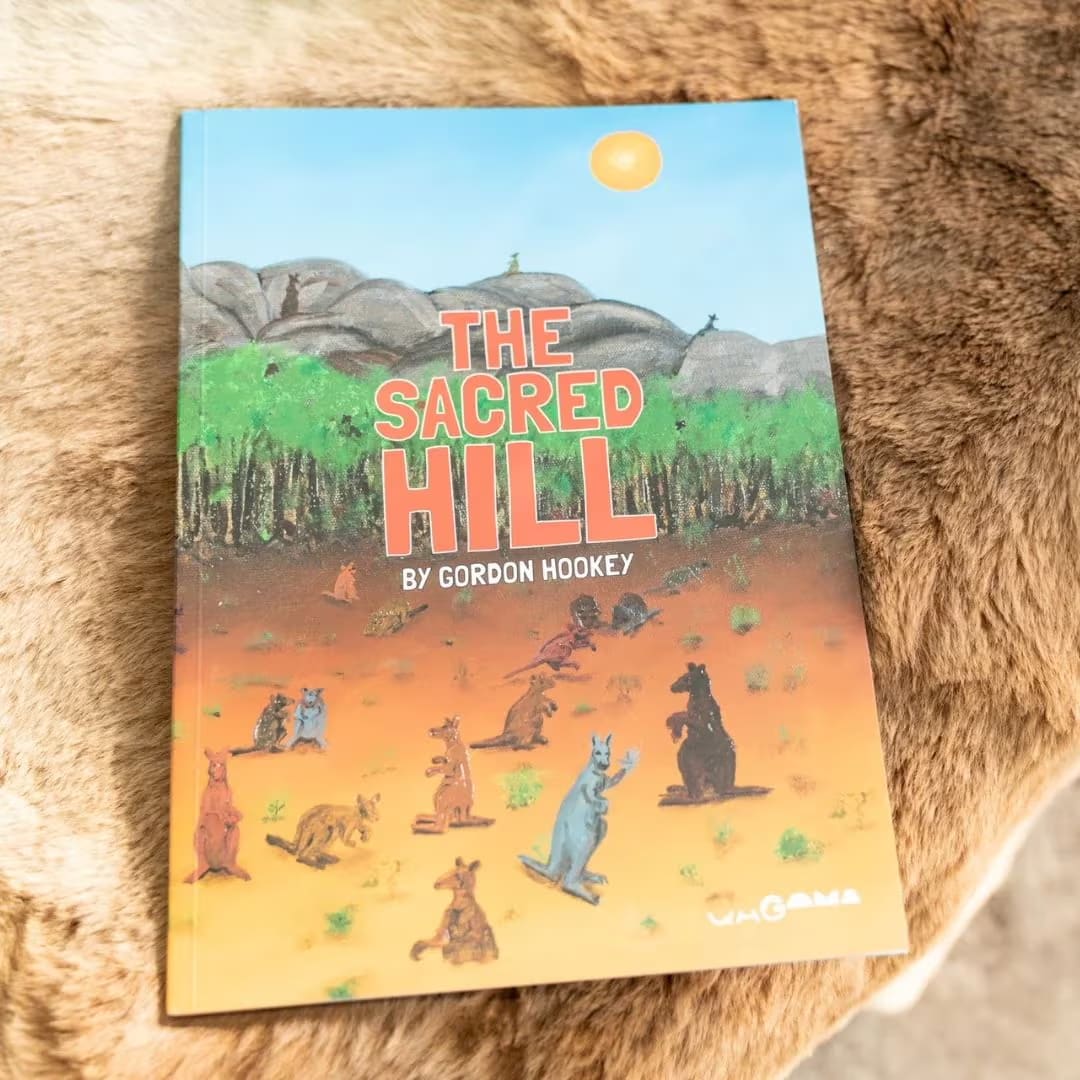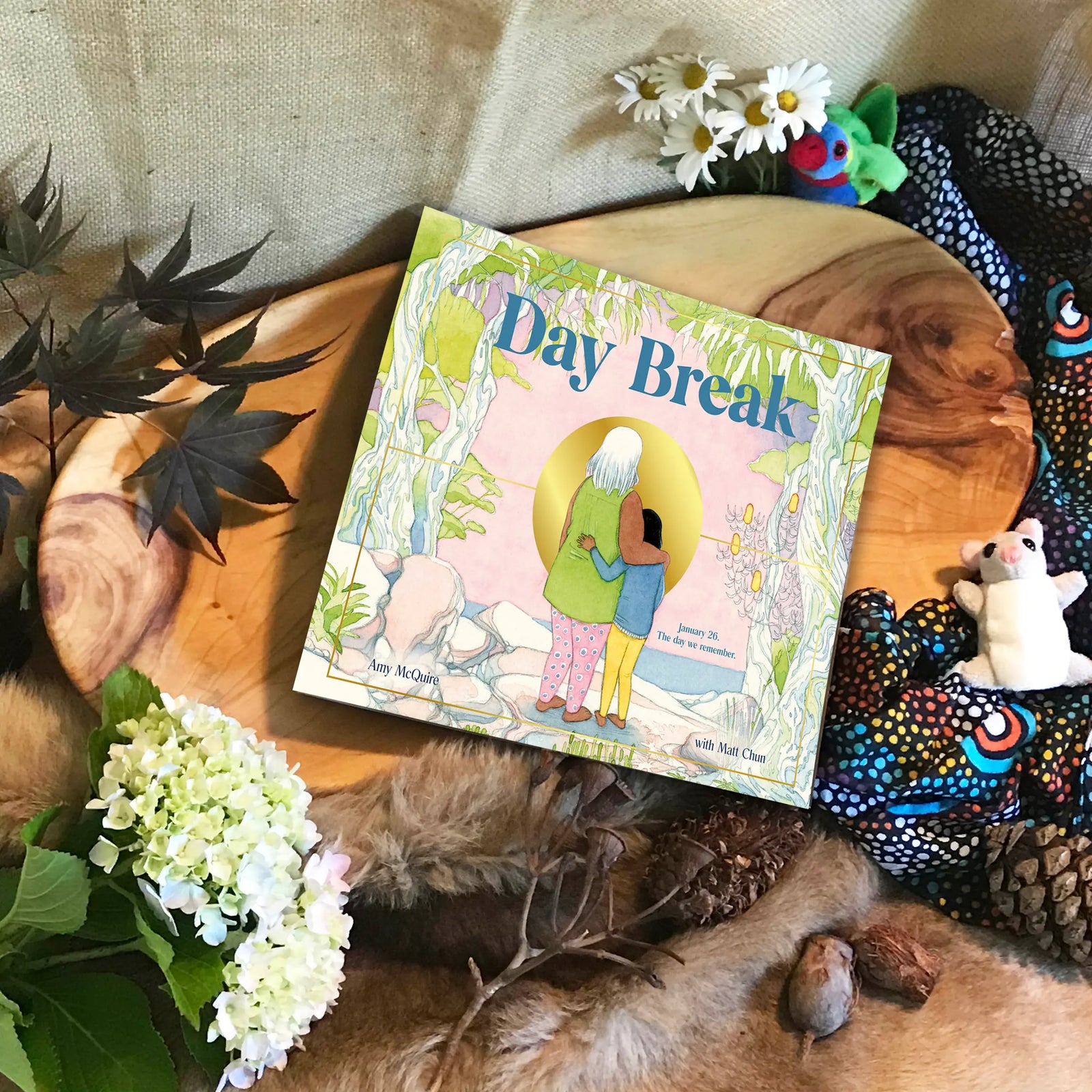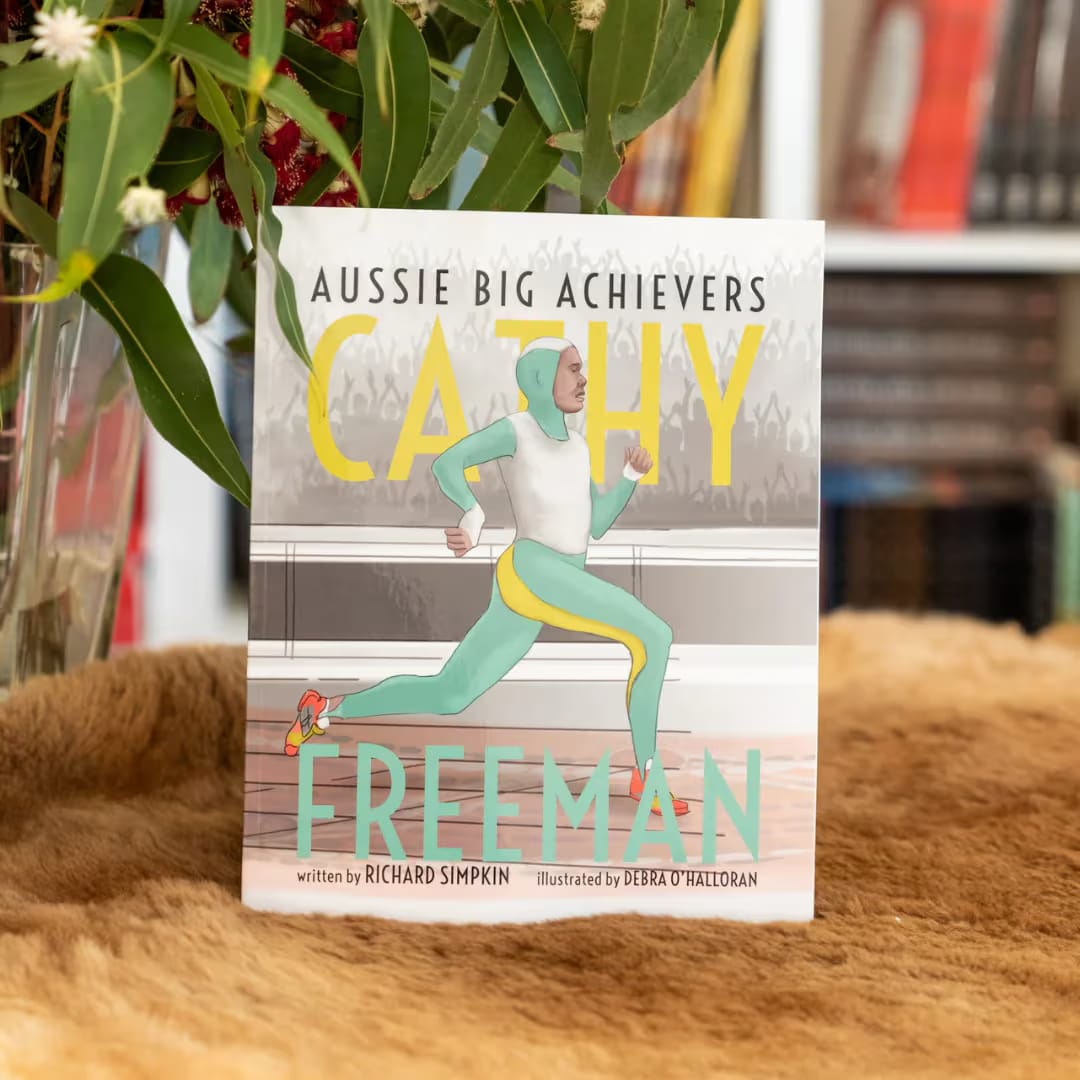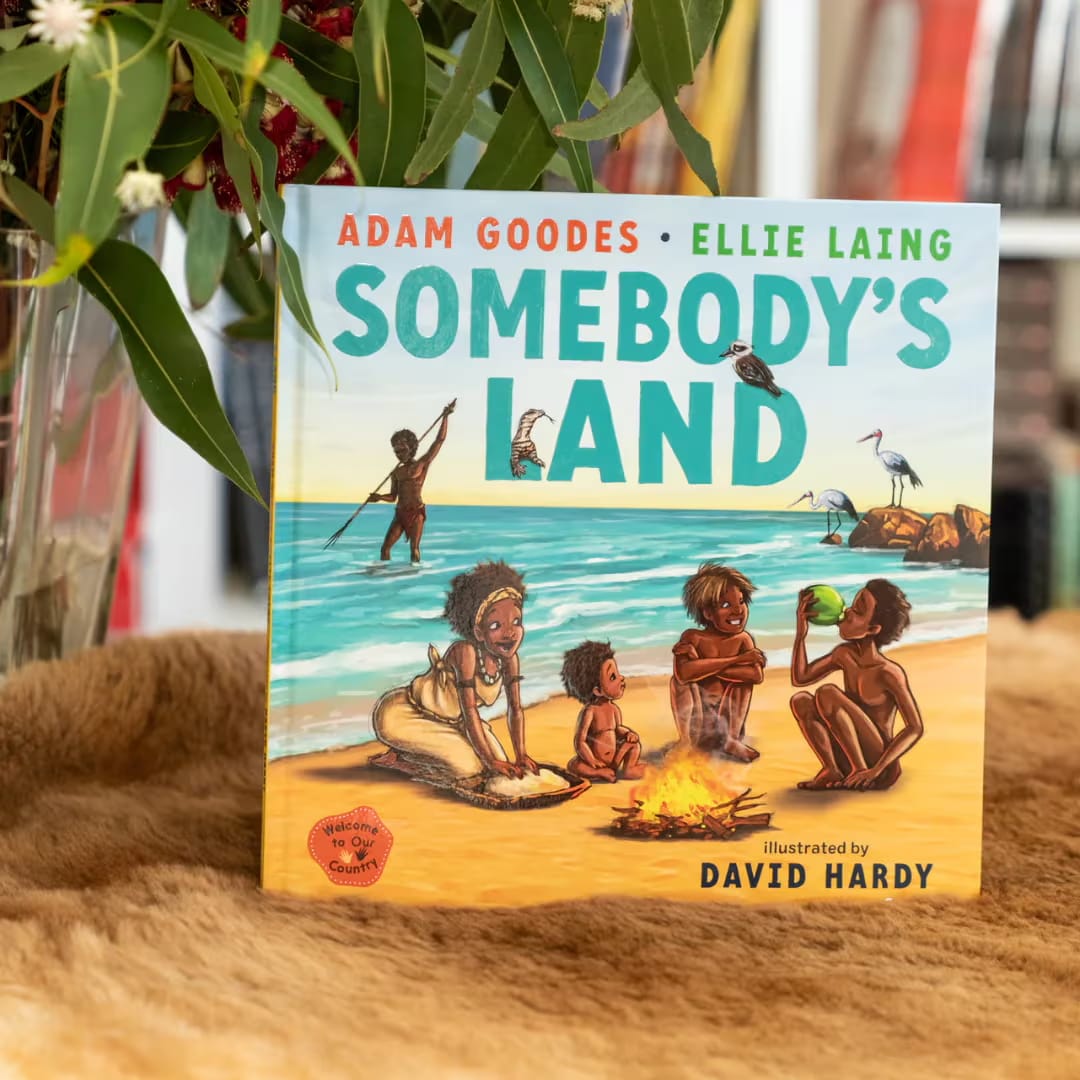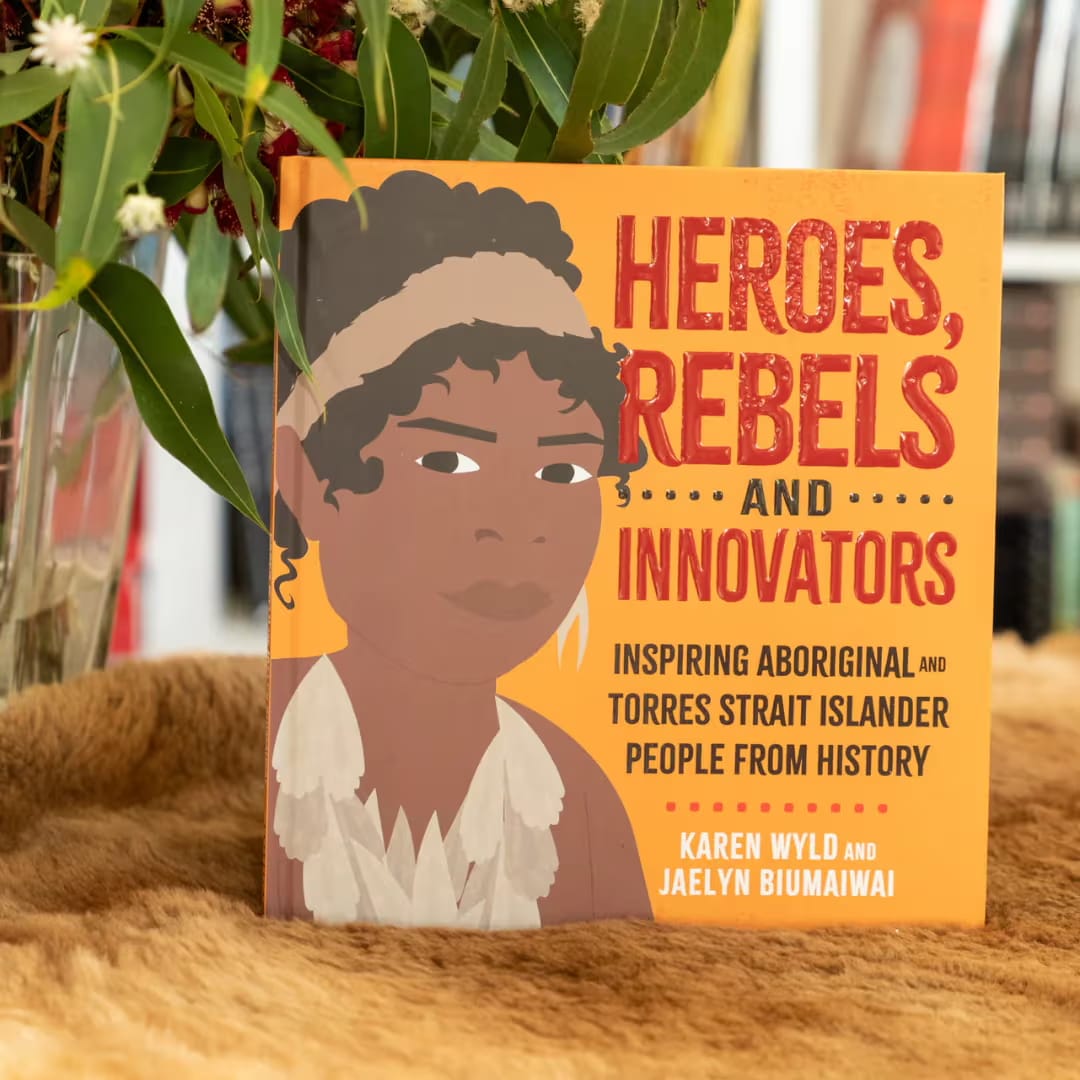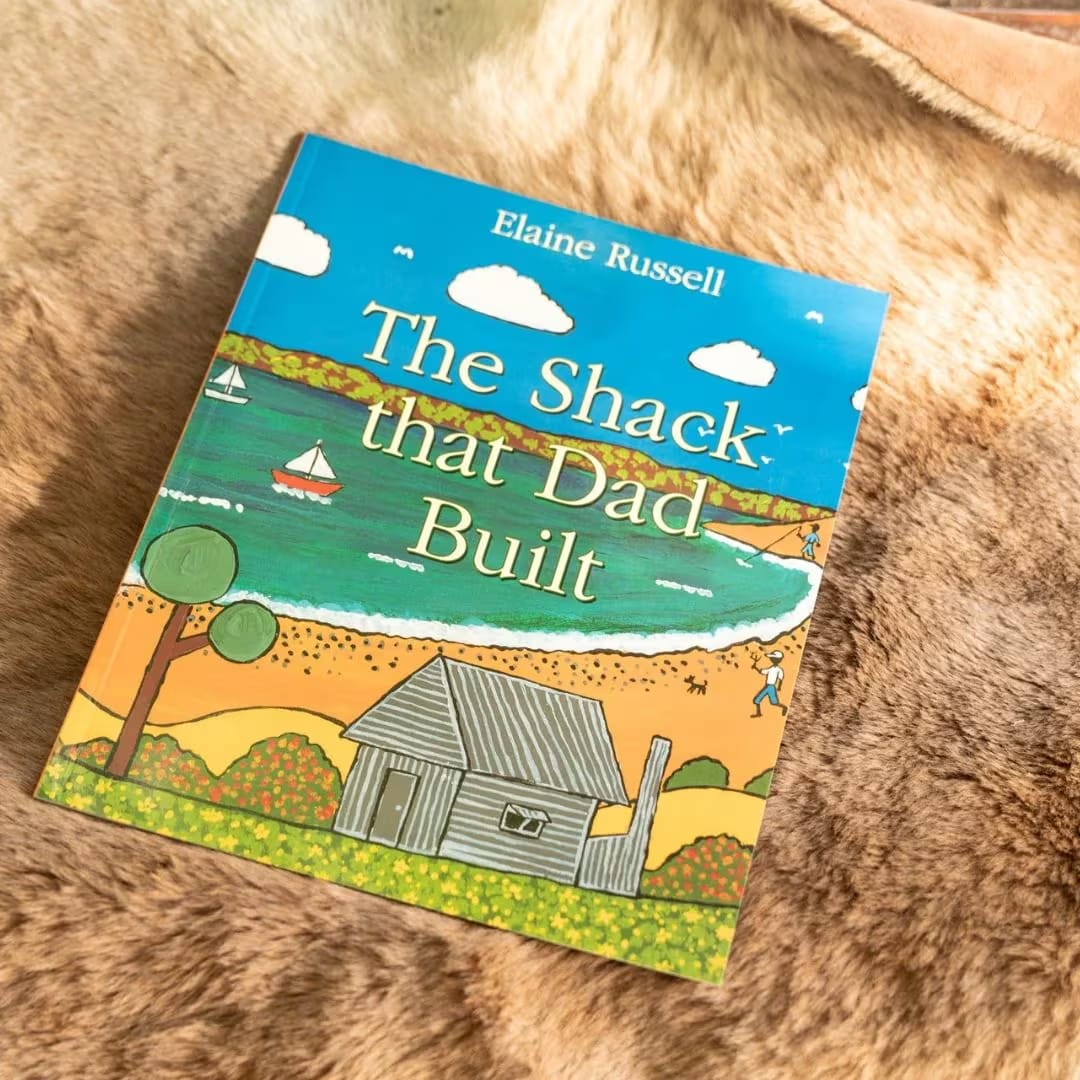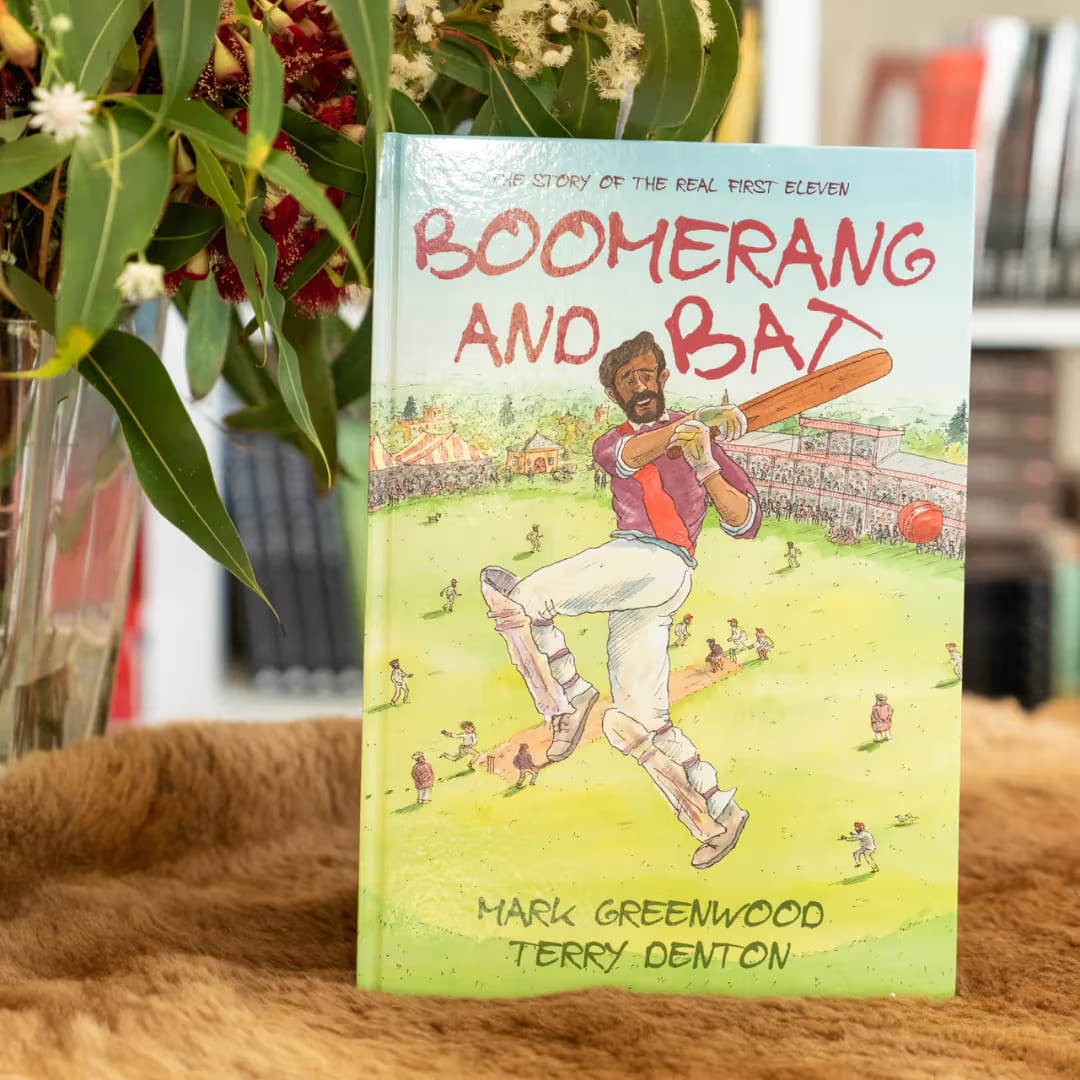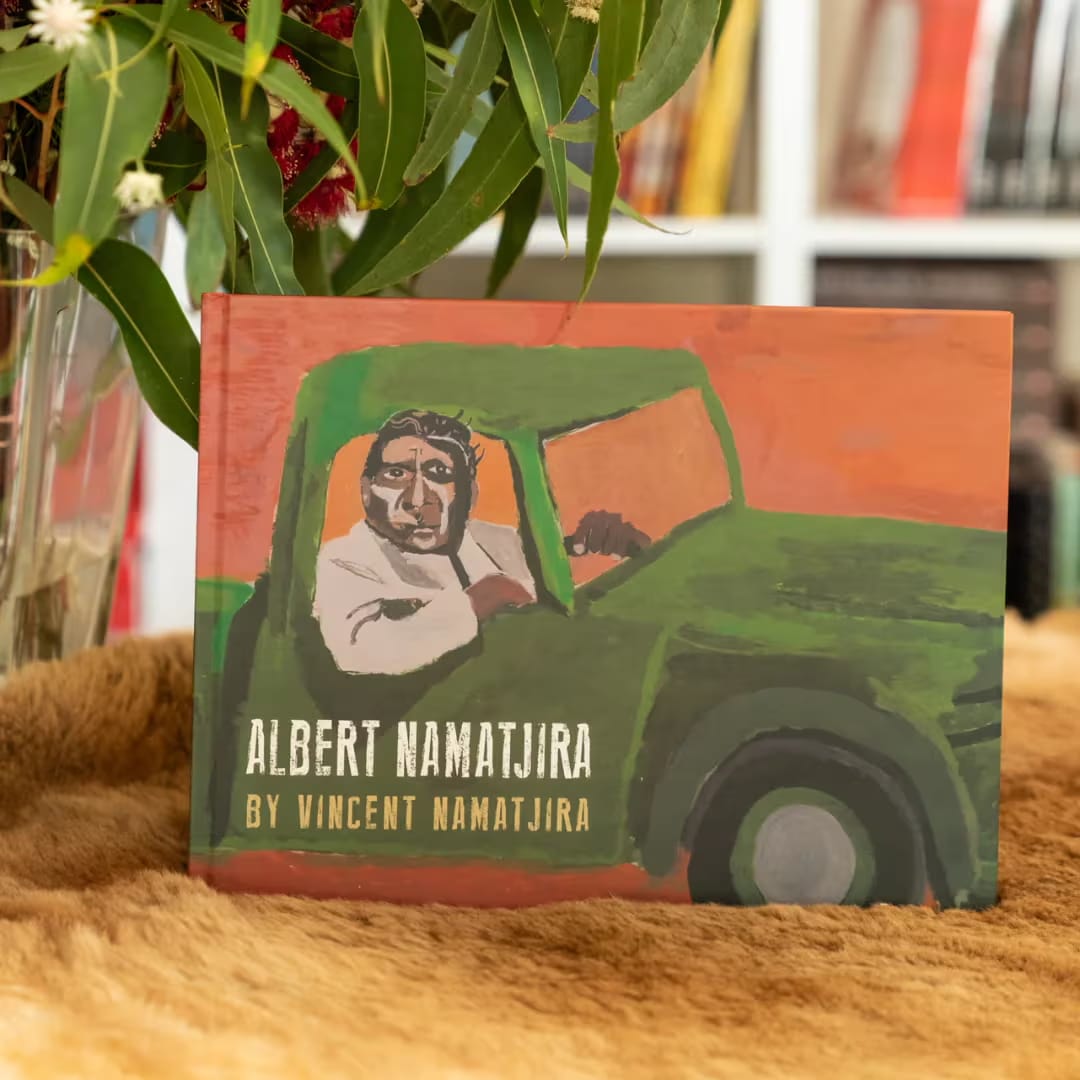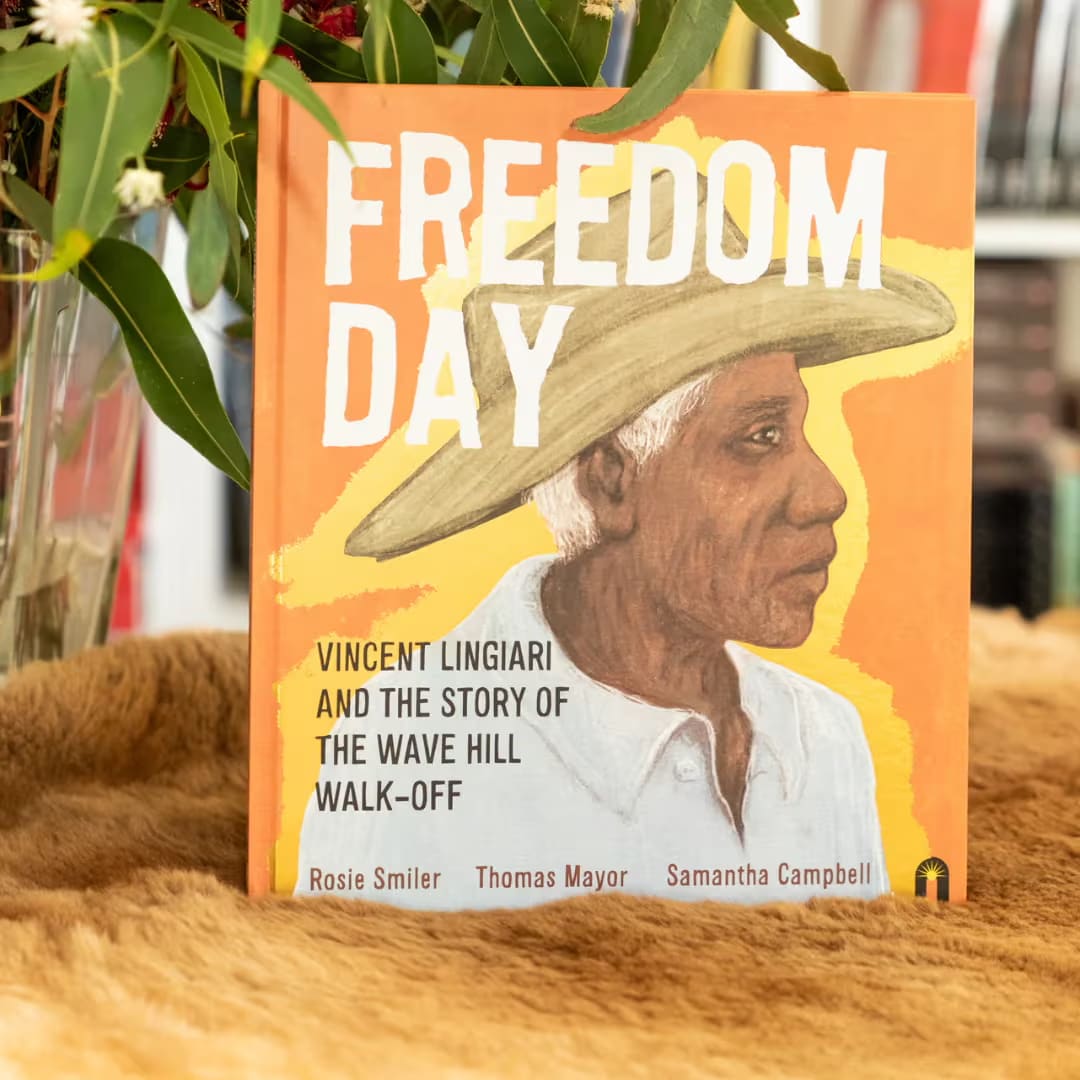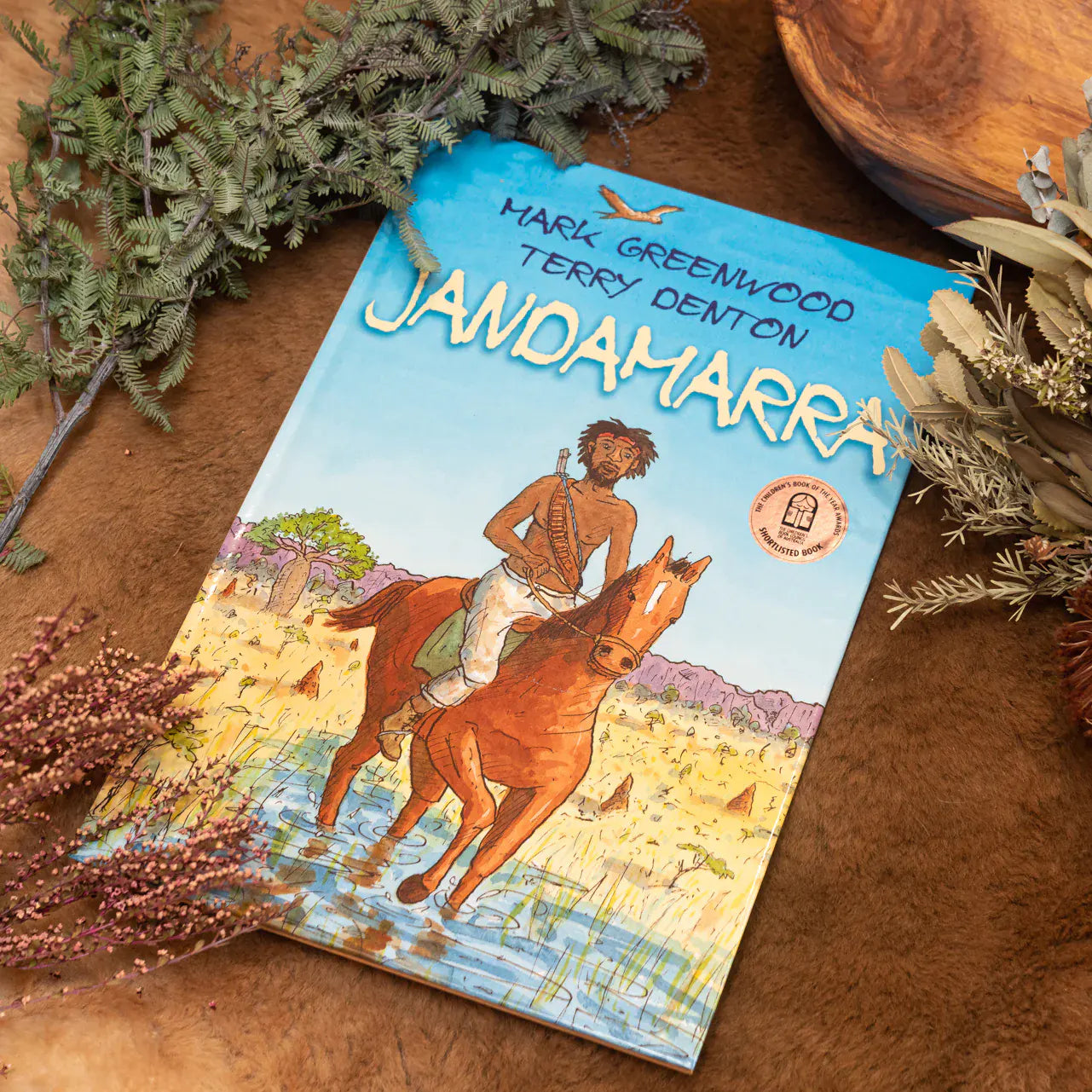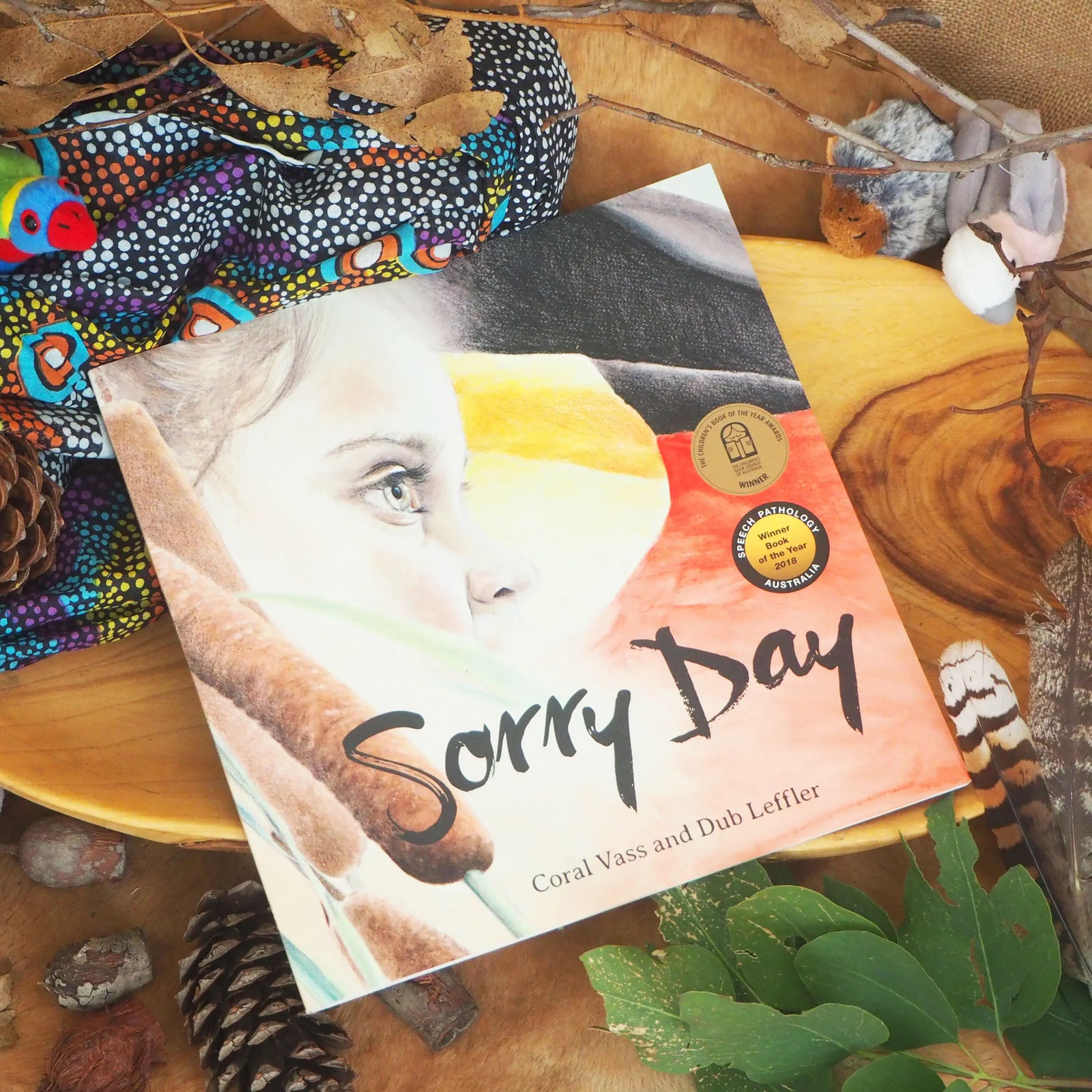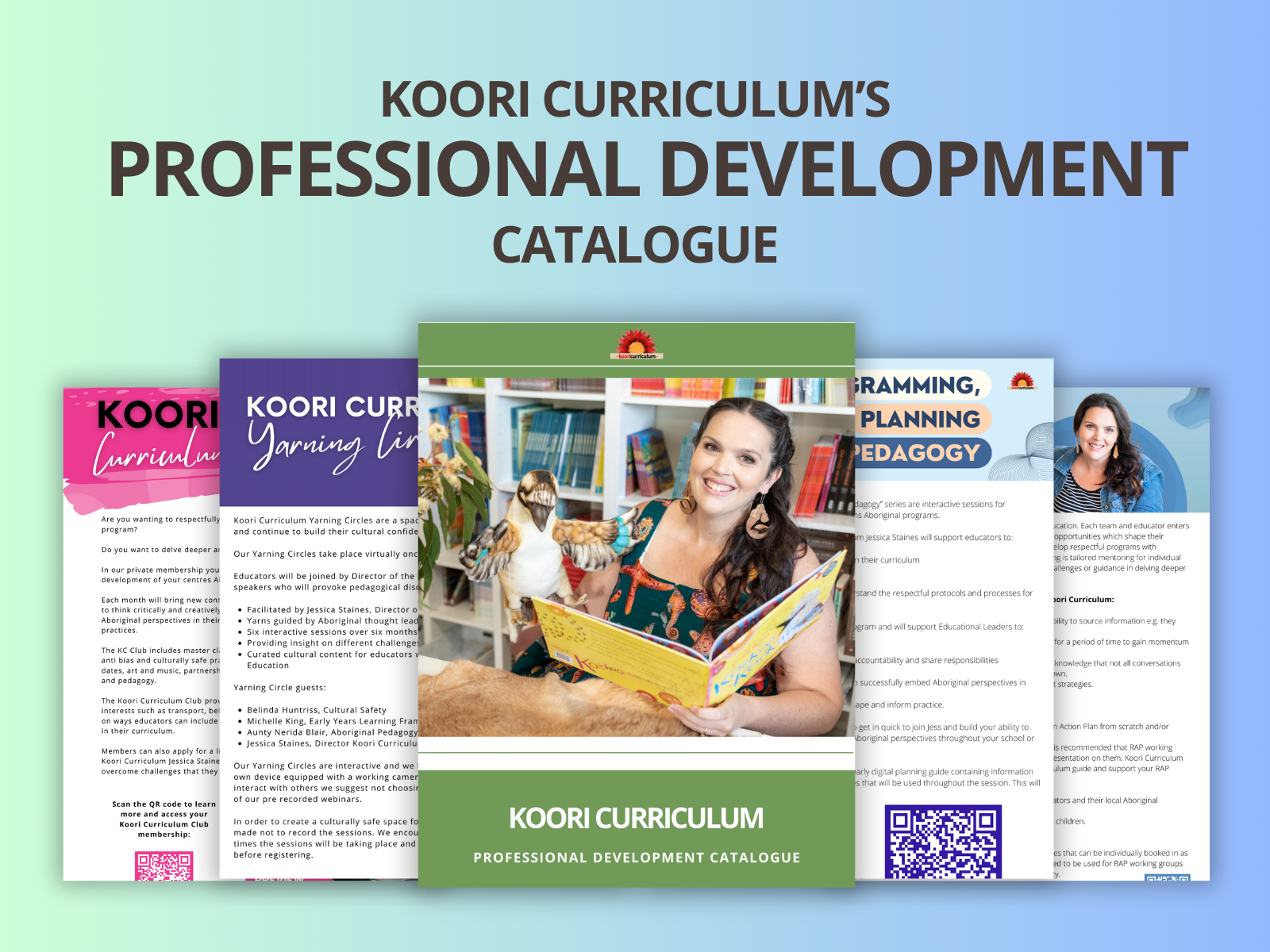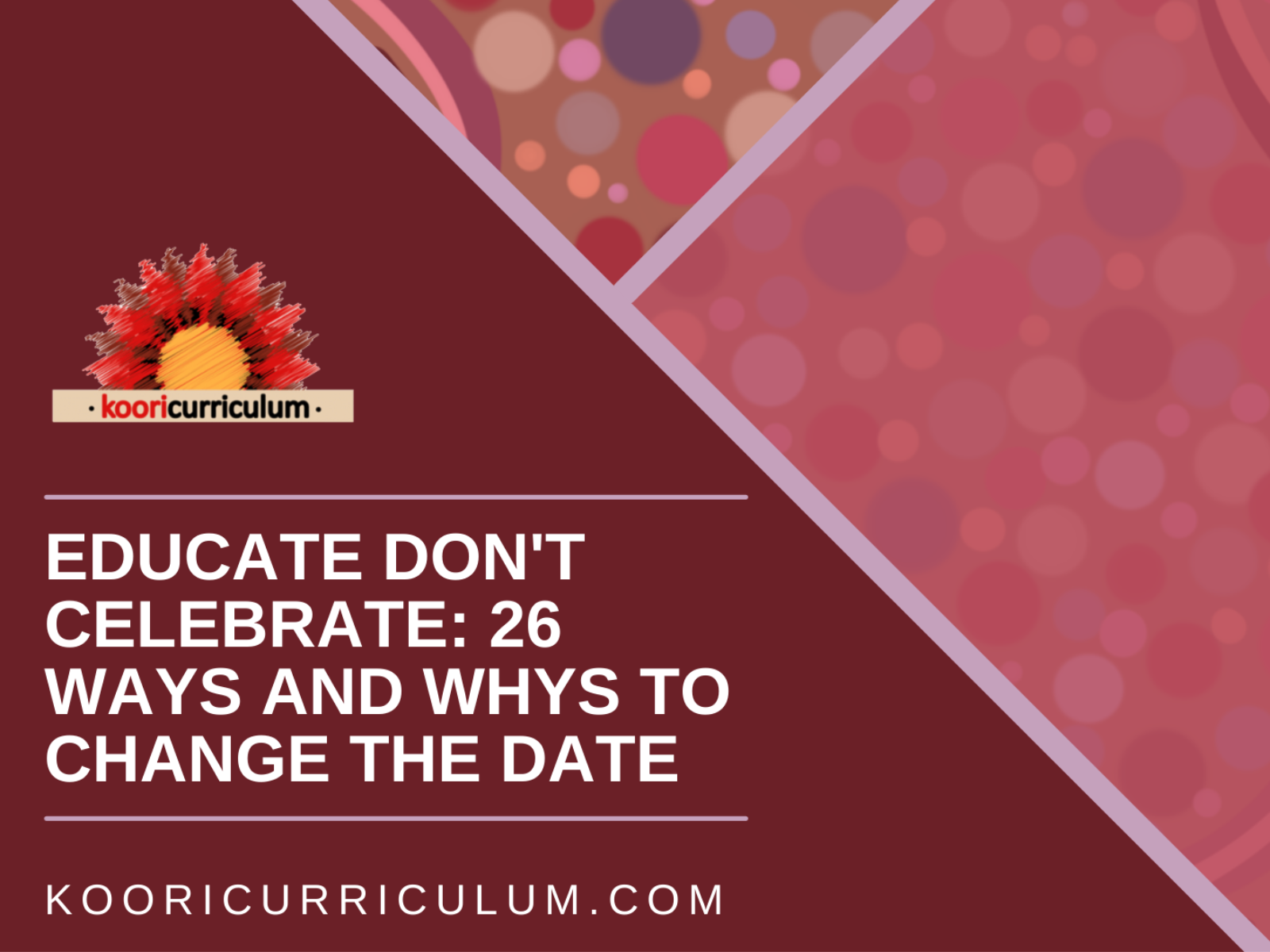
Aboriginal History Collection
Many Australians have grown up not knowing much about our countries First Nation Peoples and only knowing a small amount about Australia’s Black history.
Today I’m seeing many parents and educators alike taking conscious steps to ensure that the lack of education and awareness that they encountered doesn’t continue to occur.
Here are list of some of the books that we recommend:
"When I was little, like you" by Mary Malbunka
With evocative words and stunning pictures, Mary Malbunka tells her rich story of growing up in the early days of the Papunya settlement in central Australia, going bush with her family and learning about culture and life. A picture book for all ages.
As Mary Malbunka shares her stories of playing with friends, building cubby houses, climbing trees, collecting sugarbag, digging for honey ants, hunting for lizards, and learning about the seasons, animals and plants, she creates a vivid picture of a truly Australian childhood in which country - ngurra is life itself.
Warm and accessible, this is essentially an oral story, and it contains a number of words in Luritja whose meaning is explained in context and also within an extensive glossary. The book also interprets recurring symbols used in traditional Aboriginal painting.
"Australians All: A history of Growing Up from the Ice Age to the Apology" by Nadia Wheatley. Illustrated by Ken Searle
Australians All encompasses the history of our continent from the Ice Age to the Apology, from the arrival of the First Fleet to the Mabo Judgement. Brief accounts of the lives of real young Australians open up this chronological narrative. Some of the subjects of the eighty mini-biographies have become nationally or even internationally famous. Others were legends in their own families and communities. Meticulously researched, beautifully written and highly readable, Australians All helps us understand who we are, and how we belong to the land we all share. It also shows us who we might be.
"Young Dark Emu: A Truer History" by Bruce Pascoe
Bruce Pascoe has collected a swathe of literary awards for
Dark Emu
and now he has brought together the research and compelling first-person accounts in a book for younger readers.
Using the accounts of early European explorers, colonists and farmers, Bruce Pascoe compellingly argues for a reconsideration of the hunter-gatherer label for pre-colonial Aboriginal Australians. He allows the reader to see Australia as it was before Europeans arrived — a land of cultivated farming areas, productive fisheries, permanent homes, and an understanding of the environment and its natural resources that supported thriving villages across the continent.Young Dark Emu — A Truer Historyasks young readers to consider a different version of Australia’s history pre-European colonisation.
"Dreaming Soldiers" by Catherine Bauer. Illustrated by Shane McGrath
A powerful and moving story about true mateship.
Jimmy and Johnno are best mates. The two young friends do everything together, sharing adventures and growing up side by side in the dusty cattle yards of an Australian Outback station. When World War One strikes, they head overseas to fight on the battlefields of the Western Front. Two boys from different cultures. A friendship for life.
"Stories for Simon" by Lisa Miranda Srazin. Illustrated by Lauren Briggs
A beautiful story of acknowledging the past and working together for a brighter future.
When Simon unwraps a beautiful boomerang wrapped in an old newspaper, he learns of the national apology to the Stolen Generations. Who were the Stolen Generations and how can saying ‘sorry’ help? Through a new friendship and a magnificent collection of stories, Simon gains a deep appreciation of the past and a positive vision for the future.
"Stolen Girl" by Trina Saffioti & Norma MacDonald
A fictionalised account of the Stolen Generation that tells of an Aboriginal girl taken from her family by the government and sent to a children’s home. She sings and dreams of her mother and the life they once shared but each morning is woken by the bell to the harsh reality of the children’s home. Finally, one day she unlocks the door and takes her first step toward home.
"Alfred's War" by Rachael Bin Salleh. Illustrated by Samantha Fry
Alfred’s War is a powerful story that unmasks the lack of recognition given to Australian Indigenous servicemen who returned from the WWI battlelines.
"Tell Me Why" by Robyn Templeton & Sarah Jackson. Illustrated by Robyn Templeton
The true story of a young girl's search for identity and desire to understand her Aboriginality. Seven-year-old Sarah goes to her great-grandmother and asks questions about her family. This universal feel-good story looks at how family history shapes our childhood journeys
"Say Yes: A Story of Friendship, Fairness and a Vote for Hope" by Jennifer Castles. Illustrated by Paul Seden
Once there were two little girls who were best friends. They did everything together. As they get older, they weren't allowed to do the same things anymore. Because they looked different. Because of the law.
This is a story about the landmark 1967 Referendum, the two women who came together to change the law... and how the Australia people said YES.
"I love looking through this book, seeing the family faces, remembering the hard work - and the extraordinary response of the Australian People"
Associate Professor Lilin G. Bandler
"My Lost Mob" by Venetia Tyson
Young children will be captivated by the bright colours and Australian animals which bring to life this entertaining tale of a young emu who has lost his mob and sets out to find it.
He asks the animals he encounters along the way if they 'have seen his mob?' The kangaroo, lizard, owl, cassowary and others provide directions in their own, often confusing, way, until finally the youngster catches up with his mob.
In iconic Australian style, My Lost Mob combines highly textured and bold illustrations of Australian animals and varied landscapes in a simple, classical format that will appeal to younger readers and all that are young at heart. A gem of a book that will charm its way onto bookshelves.
"Charlie's Swim" by Edith Wright. Illustrated by Charmaine Ledden-Lewis
During WWII after the Japanese invasion of Java, more than 1000 refugees from the Dutch East Indies, many in flying boats, passed through Broome, which was a major refuelling point and a significant Allied military base. On 3 March 1942 Broome was attacked by Japanese fighter planes, killing at least 88 civilians and Allied military personnel.
Charlie’s Swim is based on the true story of the author’s Uncle Charlie (Charles D’Antoine) who was working inside a flying boat when the attack began. In the midst of flying bullets, blazing fires and sharks, Charlie saw a woman and child desperately trying to keep afloat and without hesitation went to their rescue.
In 1944, Charlie was awarded a Certificate of Merit from the Royal Humane Society of Australasia in recognition of his efforts and he was awarded four medals for bravery from the Dutch government. It took a further 80 years for the Australian government and military to formally recognise this bravery.
"The Sacred Hill" by Gordon Hookey
"There was a sacred hill, It had been there for as long as time itself. Mobs of kangaroos, living on the sacred hill, looked after the land and the land looked after them. And they were happy..." Until a mob of noisy mynas disturbs the peace. Forced to leave their land, the kangaroos soon find themselves a long way from home.
"Day Break" by Amy McQuire with Matt Chun
Day Break is the story of a family making their way back to Country on January 26. We see the strength they draw from being together, and from sharing stories as they move through a shifting landscape.
The story refocuses the narratives around ‘Australia Day’ on Indigenous survival and resistance, and in doing so honours the past while looking to the future. Confronting yet truthful, painful yet full of hope, Day Break is a crucial story that will open up a conversation on truth-telling for the next generation.
"Sorry Sorry" by Anne Kerr. Cover by Marda Pitt
This Hardback edition could be a first step of informing these young children of a significant aspect of Australian history, with age appropriate illustrations and dialogue. This book could also be an introduction to understanding the journey of reconciliation with Australia’s First Peoples.
The hope is that Sorry Sorry can be used to enable other educators, be they teachers, family or friends, to begin the conversation of Australia’s early history with the young people in their lives.
It is hoped that Sorry Sorry will go some way in helping build a platform where understanding, appreciation and respect for ‘All People’ can be built.
"Cathy Freeman: Aussie Big Achievers" by Richard Simpkin. Illustrated by Debra O'Halloran
Cathy Freeman is an icon of Australian athletics. She won the gold medal for 400m sprint at the 2000 Sydney Olympics. She became the first Aboriginal woman to win a gold medal in athletics at an Olympics.
In addition to her athletic achievements, Cathy Freeman is the only person to be awarded the Young Australian of the Year and the Australian of the Year.
The Aussie Big Achievers series of books are a fun and educational way for children to learn about some of Australia’s most interesting and inspiring people who have helped shape our nation. Each book encourages children to always believe in themselves and never give up on their dreams.
"Somebody's Land: Welcome to our Country" by Adam Goodes & Ellie Laing. Illustrated by David Hardy
An accessible picture book for young children that introduces First Nations history and the term 'terra nullius' to a general audience, from Australian of the Year, community leader and anti-racism advocate Adam Goodes and political adviser and former journalist Ellie Laing, with artwork by Barkindji illustrator David Hardy.
For thousands and thousands of years, Aboriginal people lived in the land we call Australia.
The land was where people built their homes, played in the sun, and sat together to tell stories.
When the white people came, they called the land Terra Nullius. They said it was nobody's land. But it was somebody's land.
Somebody's Land is an invitation to connect with First Nations culture, to acknowledge the hurt of the past, and to join together as one community with a precious shared history as old as time.
Adam Goodes and Ellie Laing's powerful words and David Hardy's pictures, full of life, invite children and their families to imagine themselves into Australia's past - to feel the richness of our First Nations' history, to acknowledge that our country was never terra nullius, and to understand what 'welcome to our country' really means.
"Heroes, Rebels and Innovators" by Karen Wyld & Jaelyn Biumaiwai
Be inspired and amazed by these incredible Aboriginal and Torres Strait Islander icons!
With colourful artwork and evocative writing, this book tells stories every Australian should know.
Powerful and exciting: here are seven inspiring stories about Aboriginal and Torres Strait Islander people from history. Each colourful spread in this illustrated book tells a compelling story.
About the Author and Illustrator
Karen Wyld lives by the sea, south of Adelaide. Born on Kaurna yerta in South Australia, she is of Martu descent (people of the Pilbara region in Western Australia). Karen was the recipient of the 2020 Dorothy Hewitt Award for an Unpublished Manuscript, shortlisted for a 2021 Victorian Premier's Literary Award and longlisted for the ABIA Small Publishers' Adult Book of the Year.
Jaelyn Biumaiwai is a self-taught illustrator. She is of Mununjali and Fijian descent and lives and creates on the Gold Coast. She has a passion for Pasifika and First Nations culture and communities, and this is reflected in both her original and commissioned art.
"The Shack That Dad Built" by Elaine Russel
When Elaine Russell was five, her dad built the family a shack just outside the Aboriginal mission at La Perouse in Sydney.
In The Shack that Dad Built, Elaine illustrates what life was like for an indigenous kid on the urban fringes. Her recollections range from the happy memories of hide-and-seek in the sand dunes and hunting for bush tucker to more bittersweet memories, such as her “Saddest Christmas Ever” (when the charity responsible for distributing presents to the local Aboriginal kids ran out of toys just as Elaine reached the head of the queue). Elaine’s colourful, painterly illustrations vividly recreate these childhood experiences.
"Boomerang and Bat" by Mark Greenwood. Illustrated by Terry Denton
The first Australian cricket team to tour England was a group of Aboriginal stockmen. This is their story.
In 1868 a determined team of Aboriginal cricketers set off on a journey across the world to take on England's best.
Led by star all-rounder Johnny Mullagh, and wearing caps embroidered with a boomerang and a bat, they delighted crowds with their exceptional skill.
From the creators of Jandamarra, this is the remarkable story of the real first eleven.
"Albert Namatjira" by Vincent Namatjira
Award-winning artist Vincent Namatjira tells the life story of his great-grandfather, Albert Namatjira, one of Australia's most iconic artists.
Vincent's witty and moving paintings are accompanied by evocative text, which records the pivotal moments in Albert's life. In telling his great-grandfather's story, Vincent builds a compelling picture of the times and conditions in which Albert lived and worked, capturing his triumphs and tragedy against a backdrop of social change and historical injustices.
This poignant children's book provides an important tool for discussion about Australia's art history, and a launching pad for exploration of the key moments in Australia's Aboriginal Rights movement.
Albert Namatjira is a unique children's picture book of both artistic beauty and historical importance, and will appeal to children, art collectors and those looking for a special gift.
The artwork in this book is part of a body of work called 'Albert's Story' that was acquired by QAGOMA - Queensland Art Gallery/Gallery of Modern Art.
"Freedom Day" by Thomas Mayor & Rosie Smiler. Illustrated by Samantha Campbell
When many voices are joined together, with courage, change can happen.
In 1966, more than two hundred courageous Aboriginal people walked off the Wave Hill Cattle Station in the Northern Territory. Led by Vincent Lingiari, these stockmen and their families were walking together to fight for equal pay and land rights.
Exquisitely illustrated and designed, this non-fiction picture book brings a landmark historical event to a new generation. Many people have seen the iconic photograph of Gough Whitlam pouring a handful of red soil into the hands of Vincent Lingiari – a symbol of the legal transfer of Gurindji land back to the Gurindji people – and recognise this as a key moment in the ongoing land rights movement.Freedom Daydelves into the events that led up to this moment, and makes a rallying cry for the things that still need to change in its wake. Thomas Mayor co-authors this book with Rosie, Vincent Lingiari’s granddaughter, to bring this vital story to life. The story has been written in close consultation with the Lingiari family.
"Kunyi" by Kunyi June Anne Mclnerney
Kunyi June Anne McInerney was just four years old when she and three of her siblings were taken from their family to the Oodnadatta Children’s Home in South Australia in the 1950s.
Through an extraordinary collection of over 60 paintings, accompanied by stories, Kunyi presents a rare chronicle of what life was like for her and the other Children’s Home kids who became her family.
Her paintings are a healing trove of memories that reveal the loneliness, fear and courage of the Stolen Generation children who were torn from family and loved ones. From bible lessons to sucking bone marrow and collecting bush fruits, the escapades, adventures and sorrows of the children are painted with warmth, humour and unflinching honesty.
Kunyi’s story is one of healing and reconciliation. She is telling it so that the lives of the children at Oodnadatta Children’s Home will not be forgotten. This is a collection of tender and honest stories that will educate children on our nation’s history and remind adult readers of the real impact of the Stolen Generations.
"Jandamarra" by Mark Greenwood. Illustrated by Terry Denton
The epic and tragic story of Jandamarra, Indigenous hero of the Kimberley told through text and illustrations. A story for all Australians, providing a unique insight into an extraordinary man and a powerful slice of history.
He emerged from the cave of bats with the name given to him by his people. He was Jandamarra - a man of power who could appear and disappear like a ghost.
Set in the Kimberley region in north-west Australia, this is the story of a young warrior born to lead. To the settlers, he was an outlaw to be hunted. To the Bunuba, he was a courageous defender of his country.
Mark Greenwood's text and Terry Denton's watercolour illustrations bring to life this story of conflict and divided loyalties - giving a unique insight into an extraordinary man and a tragic but important part of Australia's frontier history.
"Sorry Day" by Coral Vass & Dub Leffler
There was a hum of excitement. Flags flickered in the breeze as Maggie’s heart danced with delight. ‘This is a very special day!’ her mother said.
Maggie holds tight to her mother as they await the long-anticipated apology to show a willingness to reconcile the past for future generations. In the excitement of the crowd, Maggie loses touch of her mother’s hand and is lost.
In a time ‘long ago and not so long ago’ children were taken from their parents, their ‘sorrow echoing across the land’. As the Prime Minister’s speech unfolds Maggie is reunited with her mother. But the faces and memories of the stolen generation are all around them. Two stories entwine in this captivating retelling of the momentous day when the then Prime Minister of Australia, Kevin Rudd, acknowledged the sorrows of past and said ‘Sorry’ to the generation of children who were taken from their homes.
The book includes a foreword from Lee Joachim; Chair of Rumbalara Aboriginal Cooperative and Director of Research and Development for Yorta Yorta Nation Aboriginal Corporation.
